Table of Contents
Quality of Life After Hemorrhagic Stroke
Hemorrhagic stroke is a type of stroke that occurs when a blood vessel in the brain ruptures and causes bleeding in the surrounding tissues. It is a serious and potentially life-threatening condition that can lead to significant physical and cognitive impairments. While immediate medical attention and rehabilitation can improve the chances of recovery, the impact of hemorrhagic stroke on an individual’s quality of life can be long-lasting.
Research has shown that individuals who have experienced hemorrhagic stroke are at an increased risk of reduced quality of life. This can be due to the physical limitations caused by the stroke, such as difficulty with mobility, speech, and daily activities. Additionally, cognitive impairments, emotional challenges, and changes in social relationships can all contribute to a decreased quality of life.
However, with proper medical care, rehabilitation, and support, individuals who have experienced hemorrhagic stroke can improve their quality of life and regain some of their independence. By addressing recovery’s physical, cognitive, emotional, and social aspects, individuals can enhance their overall well-being and regain a sense of purpose and meaning.
Key Takeaways
- Hemorrhagic stroke can significantly impact an individual’s quality of life.
- Proper medical care, rehabilitation, and support can improve an individual’s quality of life after hemorrhagic stroke.
- Addressing the physical, cognitive, emotional, and social aspects of recovery is important for enhancing quality of life.
Prevalence and Impact of Hemorrhagic Stroke
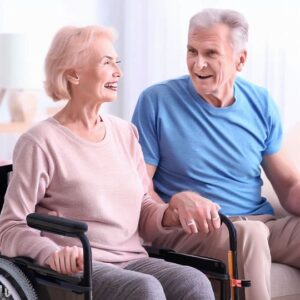
Hemorrhagic stroke is a type of stroke that occurs when a blood vessel in the brain ruptures and causes bleeding. It is less common than ischemic stroke but is more severe and has a higher mortality rate. This section will discuss the prevalence and impact of hemorrhagic stroke, including statistics and epidemiology, physical consequences, and psychological effects.
Statistics and Epidemiology
Hemorrhagic stroke is a serious medical emergency that can cause disability, death, and reduced quality of life. According to the American Stroke Association, hemorrhagic stroke accounts for about 13% of all strokes in the United States. It is more common in older adults but can occur at any age. The incidence of hemorrhagic stroke is higher in men than in women, and it is more common in people with high blood pressure and those who smoke.
Globally, hemorrhagic stroke is a significant public health problem. It is estimated that about 15% of all strokes worldwide are hemorrhagic strokes. The incidence of hemorrhagic stroke varies by region, with higher rates reported in Asia and Africa.
Physical Consequences
Hemorrhagic stroke can cause a range of physical consequences, depending on the severity and location of the bleeding. The most common physical consequences of hemorrhagic stroke include paralysis or weakness on one side of the body, difficulty speaking or understanding language, and vision problems.
Other physical consequences of hemorrhagic stroke may include:
- Seizures
- Headaches
- Nausea and vomiting
- Loss of consciousness
The severity of physical consequences can vary widely, and recovery can take weeks, months, or even years.
Psychological Effects
Hemorrhagic stroke can also have significant psychological effects on patients and their families. Anxiety and depression are common after a hemorrhagic stroke and can affect a patient’s quality of life and ability to recover. Older patients and those with more severe strokes are at higher risk of developing depression and anxiety.
Risk Factors
Several risk factors increase the likelihood of experiencing a hemorrhagic stroke, including high blood pressure, smoking, and heavy alcohol consumption. Other risk factors include a family history of stroke, previous strokes, and certain medical conditions such as cerebral amyloid angiopathy.
Survival Rate
The survival rate for hemorrhagic stroke varies depending on the severity and location of the bleeding. According to a study published in Stroke, the 30-day mortality rate for intracerebral hemorrhage (ICH) was 34.7% in 2001-2004, but it decreased to 29.3% in 2010-2013. The study also found that older age, higher severity of stroke, and the presence of comorbidities were associated with higher mortality rates.
In conclusion, hemorrhagic stroke is a serious medical emergency that can cause physical and psychological consequences and reduce a patient’s quality of life. Understanding the prevalence and impact of hemorrhagic stroke is essential for improving patient outcomes and reducing the global burden of stroke.
Immediate Post-Stroke Rehabilitation
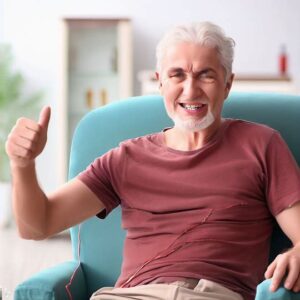
After experiencing a hemorrhagic stroke, immediate post-stroke rehabilitation is crucial for patients to regain as much function as possible. This section will cover the emergency medical response, hospitalization and acute care, medications, and interventions commonly used during this rehabilitation phase.
Emergency Medical Response
If someone is experiencing symptoms of a stroke, it is important to call 911 immediately. Warning signs of a stroke can include sudden numbness or weakness in the face, arm, or leg, especially on one side of the body, sudden confusion, trouble speaking or understanding speech, sudden trouble seeing in one or both eyes, sudden trouble walking, dizziness, loss of balance or coordination, and sudden severe headache with no known cause.
Hospitalization and Acute Care
Once a patient arrives at the hospital, they will be evaluated by a medical team to determine the severity of their stroke and the appropriate course of treatment. Surgery may sometimes be necessary to remove blood clots or repair damaged blood vessels. Patients will receive acute care during hospitalization to manage their symptoms and prevent complications such as infections and blood clots.
Medications
Medications are often used during the immediate post-stroke rehabilitation phase to manage symptoms and prevent complications. Some common medications include anticoagulants to prevent blood clots, antiplatelet drugs to prevent platelets from sticking together and forming clots, and antihypertensive medications to lower blood pressure.
Interventions
In addition to medications, physical therapy, occupational therapy, and speech therapy may be used during the immediate post-stroke rehabilitation phase. These interventions are designed to help patients regain function and improve their quality of life.
Overall, immediate post-stroke rehabilitation is a crucial phase in the recovery process for patients who have experienced a hemorrhagic stroke. Patients can improve their chances of regaining function and living a fulfilling life by receiving prompt medical attention, appropriate treatment, and interventions such as therapy.
Quality of Life After Hemorrhagic Stroke – Sources
- American Heart Association. (n.d.). Warning Signs of Stroke. Retrieved from https://www.stroke.org/en/about-stroke/stroke-symptoms
- National Stroke Association. (n.d.). Hemorrhagic Stroke Treatment. Retrieved from https://www.stroke.org/en/about-stroke/types-of-stroke/hemorrhagic-stroke-treatment
Transitioning to Rehabilitation

After a hemorrhagic stroke, the transition to rehabilitation can be a challenging process. Rehabilitation is essential to help patients recover and regain their independence. The rehabilitation process involves a team of healthcare professionals who work together to help the patient regain physical, cognitive, and emotional function.
Rehabilitation Centers and Facilities
Patients may be referred to a rehabilitation center or facility for specialized care. These centers have the necessary equipment and staff to provide intensive rehabilitation services. Patients may need to stay at the center for some time, depending on the severity of their condition. Some examples of rehabilitation centers and facilities include:
Physical and Occupational Therapy
Physical and occupational therapy are essential components of the rehabilitation process. Physical therapy helps patients regain strength, flexibility, and mobility. Occupational therapy focuses on helping patients relearn daily living skills, such as dressing, grooming, and feeding themselves. Some common physical and occupational therapy techniques include:
- Range of motion exercises
- Strengthening exercises
- Gait training
- Balance training
- Transfer training
- Adaptive equipment training
Speech and Language Therapy
Speech and language therapy is often necessary for patients who experience speech and language difficulties after a hemorrhagic stroke. Aphasia and dysarthria are common conditions that may require speech and language therapy. Speech and language therapy may include:
- Articulation therapy
- Language therapy
- Swallowing therapy
- Cognitive-communication therapy
In conclusion, rehabilitation after a hemorrhagic stroke can be challenging but essential. Patients may be referred to a rehabilitation center or facility for specialized care, and physical, occupational, and speech and language therapy are all important components of the rehabilitation process. With the help of a dedicated healthcare team, patients can work towards regaining their independence and improving their quality of life.
Physical Aspects of Recovery
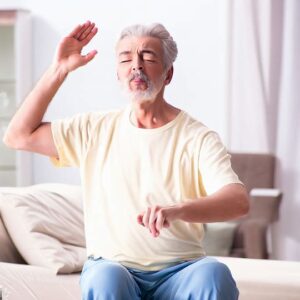
Recovering from a hemorrhagic stroke can be a long and challenging process. Physical therapy is a crucial aspect of recovery as it helps to rebuild strength and physical function. This section will discuss some of the physical aspects of recovery and how they can be improved with therapy.
Mobility and Motor Skills
Mobility and motor skills are often affected after a hemorrhagic stroke. Patients may experience weakness or paralysis on one side of their body, making it difficult to move around and perform everyday tasks. Physical therapy can help improve mobility and motor skills by focusing on exercises that target the affected muscles. These exercises may include stretching, range of motion, and resistance training.
Balance and Coordination
Balance and coordination are also commonly affected after a hemorrhagic stroke. Patients may experience difficulty with simple tasks such as standing up or walking. Physical therapy can help improve balance and coordination by focusing on exercises that target these areas. These exercises may include standing on one leg, walking on uneven surfaces, and using balance boards.
Managing Fatigue
Managing fatigue is an important aspect of recovery after a hemorrhagic stroke. Patients may experience significant fatigue and tiredness, making it difficult to complete physical therapy exercises. Physical therapists can help patients manage their fatigue by developing exercise programs tailored to their needs. This may include shorter exercise sessions or exercises that are less strenuous.
Physical therapy is crucial to recovery after a hemorrhagic stroke. Patients can improve their strength and physical function by focusing on mobility and motor skills, balance and coordination, and managing fatigue. With the help of a trained physical therapist, patients can regain their independence and improve their quality of life.
Quality of Life After Hemorrhagic Stroke – Sources
- Recovery and Rehabilitation after Intracerebral Hemorrhage
- Quality of Life After Intracerebral Hemorrhage
Cognitive Rehabilitation

Cognitive rehabilitation is an important aspect of post-stroke care that aims to improve cognitive function, emotional well-being, and overall quality of life. It involves a variety of techniques and strategies that are tailored to the individual needs of the patient.
Memory and Attention
Memory and attention are often affected after a hemorrhagic stroke. Cognitive rehabilitation techniques such as spaced retrieval training, errorless learning, and external memory aids effectively improve memory and attention in stroke survivors.
According to a systematic review and meta-analysis by Systematic Reviews Journal, cognitive rehabilitation interventions can significantly improve memory and attention in stroke patients with cognitive impairment.
Problem-solving and Decision Making
Problem-solving and decision-making are also commonly affected after a hemorrhagic stroke. Cognitive rehabilitation techniques such as problem-solving training and decision-making training effectively improve stroke survivors’ skills.
According to a study published in the Journal of Stroke and Cerebrovascular Diseases, problem-solving training can significantly improve problem-solving ability in stroke survivors.
Coping with Emotional Challenges
Anxiety and depression are common emotional challenges that stroke survivors face. Cognitive rehabilitation techniques such as cognitive-behavioral therapy (CBT) and mindfulness-based stress reduction (MBSR) effectively reduce anxiety and depression in stroke survivors.
A study published in the Journal of Neurology, Neurosurgery & Psychiatry found that CBT can significantly reduce anxiety and depression in stroke survivors. Another study published in the Journal of Clinical Psychology found that MBSR can significantly reduce depression in stroke survivors.
In conclusion, cognitive rehabilitation is an important aspect of post-stroke care that aims to improve cognitive function, emotional well-being, and overall quality of life. Techniques such as spaced retrieval training, problem-solving training, and CBT effectively improve cognitive function and reduce emotional challenges in stroke survivors.
Emotional Well-being

Hemorrhagic stroke survivors often experience emotional and behavioral changes that can impact their quality of life. Emotional well-being is a crucial aspect of post-stroke recovery, and it is essential to address these changes to promote a positive outlook.
Depression and Anxiety
Depression and anxiety are common emotional issues that can affect stroke survivors. According to the American Stroke Association, up to one-third of stroke survivors experience depression, and anxiety is also prevalent in this population. These conditions can be caused by physical, emotional, and psychological factors.
It is important to identify and treat depression and anxiety early on to prevent them from worsening. Treatment options include psychotherapy, medication, and support groups. In some cases, a combination of these approaches may be necessary.
Emotional Adjustment and Acceptance
Emotional adjustment and acceptance are critical components of post-stroke recovery. Survivors need to acknowledge and accept the changes due to their stroke. This can be a challenging process, but with the right support, it is possible to achieve a positive outlook.
Survivors may need to adjust to physical limitations, changes in their daily routine, and altered relationships with loved ones. These changes can be overwhelming, but survivors can adapt to their new normal with time and patience.
Support Network and Counseling
A strong support network is crucial for emotional well-being after a stroke. This can include family members, friends, and healthcare professionals. Support groups can also be beneficial, as they provide a safe space for survivors to connect with others who are going through similar experiences.
Counseling can also be helpful for stroke survivors who are struggling with emotional issues. A mental health professional can provide support, guidance, and coping strategies to help survivors manage their emotions and improve their quality of life.
In conclusion, emotional well-being is a critical component of post-stroke recovery. Depression and anxiety are common emotional issues that can be addressed with the right treatment. Emotional adjustment and acceptance are also important, and a strong support network and counseling can help survivors achieve a positive outlook.
Quality of Life After Hemorrhagic Stroke – Sources
- Emotional Effects of Stroke | American Stroke Association
- Mental Health and Well-being | American Stroke Association
- Quality of Life After Intracerebral Hemorrhage | Stroke – AHA/ASA Journals
Communication Challenges
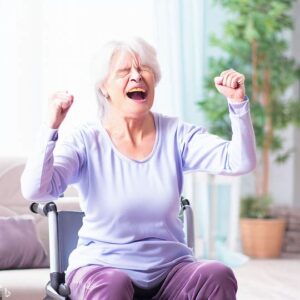
Communication challenges are a common problem for individuals who have suffered a hemorrhagic stroke. These challenges can be caused by factors such as aphasia, dysarthria, and cognitive deficits. In this section, we will discuss individuals’ communication challenges after a hemorrhagic stroke and the different methods used to overcome them.
Aphasia and Speech Difficulties
Aphasia is a common condition that affects the ability to communicate effectively. It is caused by damage to the language center of the brain, which can occur during a hemorrhagic stroke. Individuals with aphasia may have difficulty speaking, understanding speech, reading, and writing.
Speech difficulties, such as dysarthria, can also occur after a hemorrhagic stroke. Dysarthria is caused by damage to the nerves that control the muscles used in speech. Individuals with dysarthria may have slurred speech, difficulty pronouncing words, and a weak voice.
Alternative Communication Methods
Alternative communication methods often help individuals with communication challenges after a hemorrhagic stroke. These methods include:
- Gesture and body language: Gestures and body language can convey meaning when speech is difficult.
- Writing: Writing can be an alternative to speech for individuals with difficulty speaking or understanding speech.
- Sign language: Sign language can be an alternative to speech for individuals with difficulty speaking or understanding speech.
- Communication boards: Communication boards are visual aids that can facilitate communication. They can include pictures, symbols, and words.
Augmentative and Alternative Communication Devices
Augmentative and alternative communication (AAC) devices are electronic devices that can be used to facilitate communication. These devices can include:
- Speech-generating devices: Speech-generating devices are electronic devices that can produce speech for individuals with difficulty speaking. These devices can be controlled by touch, eye gaze, or head movement.
- Text-to-speech devices: Text-to-speech devices are electronic devices that can convert written text into speech.
- Communication apps: Communication apps are software applications that can be installed on a smartphone or tablet. These apps can facilitate communication by providing a visual aid, text-to-speech, or speech-to-text functionality.
Communication challenges after a hemorrhagic stroke can be difficult to overcome, but many methods are available to help individuals communicate effectively. Working with a speech-language pathologist is important to determine the best method for each individual.
Quality of Life After Hemorrhagic Stroke – Sources
- Aphasia – Mayo Clinic
- Dysarthria – American Speech-Language-Hearing Association
- Alternative and Augmentative Communication – American Speech-Language-Hearing Association
Handling Social Relationships
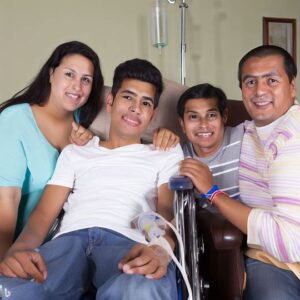
After a hemorrhagic stroke, survivors often face challenges in their social relationships. These challenges can affect their quality of life, making it important to address them. This section covers some of the issues survivors may face regarding social relationships and how to handle them.
Family Dynamics and Adjustments
Family dynamics can change significantly after a stroke, and it may take time to adjust to these changes. Survivors may require more care and support from their family members, which can strain relationships. Family members may also struggle to adjust to the survivor’s new limitations and may feel overwhelmed or frustrated.
Survivors and their families must communicate openly and honestly about their feelings and needs. Family members should be patient and understanding while the survivor adjusts to their new life. Survivors should also be open about their limitations and needs, so their family members can support them.
Reintegrating into Social Circles
After a stroke, survivors may feel isolated and disconnected from their social circles. They may have difficulty communicating or participating in activities they used to enjoy. Survivors need to reintegrate into their social circles to improve their quality of life.
Survivors should start by contacting friends and acquaintances and letting them know about their situation. They should also be open about their limitations and ask for help when needed. Survivors can also try to participate in activities adapted to their abilities or find new hobbies they can enjoy.
Building New Support Systems
Survivors may also need to build new support systems after a stroke. They may need to find new healthcare providers, therapists, or support groups to help them cope with their new limitations. Survivors need to seek out these resources to improve their quality of life.
Survivors can start by talking to their healthcare providers about resources available in their community. They can also reach out to organizations supporting stroke survivors and their families. Survivors should also consider joining support groups to connect with others who are going through similar experiences.
Handling social relationships after a hemorrhagic stroke can be challenging, but survivors need to address these issues to improve their quality of life. By communicating openly with their families, reintegrating into their social circles, and building new support systems, survivors can improve their relationships and find new ways to enjoy life.
Quality of Life After Hemorrhagic Stroke – Sources
- Quality of Life After Intracerebral Hemorrhage | Stroke
- Determinants of quality of life in patients with hemorrhagic stroke | Journal of Research in Medical Sciences
Managing Dietary Changes and Nutrition

After a hemorrhagic stroke, managing dietary changes and nutrition is essential for promoting a healthy lifestyle and improving stroke-specific quality of life. This section will cover some of the main aspects of managing dietary changes and nutrition after a hemorrhagic stroke.
Swallowing Difficulties
Swallowing difficulties, also known as dysphagia, is a common problem after a hemorrhagic stroke. Dysphagia can lead to malnutrition, dehydration, and aspiration pneumonia. Therefore, it is essential to identify and manage dysphagia early on.
A speech-language pathologist can assess swallowing function and recommend strategies and techniques to improve swallowing safety. These strategies may include modifying the texture and consistency of foods and liquids, using adaptive devices, and practicing swallowing exercises.
Modified Diets and Nutrition Counseling
Modified diets may be necessary after a hemorrhagic stroke to prevent choking and aspiration. A registered dietitian can assess nutritional needs and provide recommendations for modified diets. These modified diets may include pureed, mechanically soft, or thickened liquids.
Nutrition counseling can also be beneficial for individuals after a hemorrhagic stroke. A registered dietitian can provide education on healthy eating habits, portion control, and food choices that are low in salt, sugar, and saturated fat. Nutrition counseling can also address other medical conditions affecting dietary needs.
Promoting a Healthy Lifestyle
Promoting a healthy lifestyle is crucial for improving stroke-specific quality of life after a hemorrhagic stroke. A healthy lifestyle includes regular exercise, adequate sleep, stress management, and a balanced diet.
Exercise can improve physical function, reduce the risk of recurrent stroke, and improve overall quality of life. A physical therapist can guide safe and effective exercise programs.
Adequate sleep is also essential for stroke recovery. Sleep disturbances are common after a hemorrhagic stroke, and poor sleep quality can contribute to fatigue, depression, and cognitive impairment. A sleep specialist can provide recommendations for improving sleep quality.
Stress management is also important for promoting a healthy lifestyle after a hemorrhagic stroke. Stress can contribute to high blood pressure, a recurrent stroke risk factor. Relaxation techniques like deep breathing, meditation, and yoga can help reduce stress.
In conclusion, managing dietary changes and nutrition after a hemorrhagic stroke is essential for promoting a healthy lifestyle and improving stroke-specific quality of life. Swallowing difficulties, modified diets, nutrition counseling, and promoting a healthy lifestyle are all important aspects of managing dietary changes and nutrition after a hemorrhagic stroke.
Quality of Life After Hemorrhagic Stroke – Sources
- American Stroke Association
- National Stroke Association
- National Institute of Neurological Disorders and Stroke
Financial and Vocational Considerations
After a hemorrhagic stroke, individuals may face financial and vocational challenges impacting their quality of life. It is important to consider these factors and explore available resources to help manage the financial burden and maintain employment.
Employment Implications
Hemorrhagic stroke survivors may experience physical or cognitive impairments affecting their work ability. According to a study published in the American Journal of Physical Medicine & Rehabilitation, only 30% of stroke survivors return to work within six months of their stroke.
Employers are required by law to provide reasonable accommodations to employees with disabilities, including those who have had a stroke. This can include modified work schedules, job restructuring, or assistive technology. Stroke survivors need to communicate with their employers about their needs and explore available accommodations.
Disability Benefits and Support
Individuals with a hemorrhagic stroke may be eligible for disability benefits through the Social Security Administration (SSA). The SSA offers two programs: Social Security Disability Insurance (SSDI) and Supplemental Security Income (SSI).
SSDI is available to individuals who have worked and paid Social Security taxes for a certain number of years and have a medical condition that prevents them from working. SSI is a needs-based program for individuals who have limited income and resources.
In addition to disability benefits, other forms of support are available for stroke survivors. The National Stroke Association provides a list of resources for financial assistance, including grants and loans for home modifications, medical equipment, and transportation.
Vocational Rehabilitation Programs
Vocational rehabilitation programs can help individuals with disabilities, including those with a stroke, obtain and maintain employment. These programs offer job training, career counseling, and job placement assistance.
The Department of Labor’s Office of Disability Employment Policy (ODEP) provides resources and information on vocational rehabilitation programs. The ODEP also offers the Job Accommodation Network (JAN), which provides free consulting services to employers and individuals with disabilities on workplace accommodations.
Stroke survivors must explore available resources and support to help manage their stroke’s financial and vocational implications. By communicating with employers, applying for disability benefits, and utilizing vocational rehabilitation programs, individuals can work towards maintaining their independence and improving their quality of life.
Quality of Life After Hemorrhagic Stroke – Sources
- American Journal of Physical Medicine & Rehabilitation
- Social Security Administration
- National Stroke Association
- Department of Labor’s Office of Disability Employment Policy
- Job Accommodation Network
Assisted Living Options
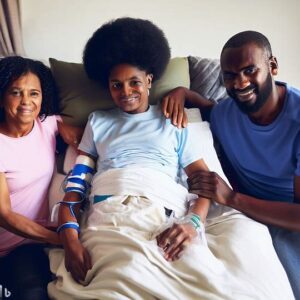
After a hemorrhagic stroke, many patients require assistance with activities of daily living (ADLs) and may need to consider assisted living options. The following are some options to consider for stroke survivors:
Home Adaptations and Assistive Devices
For those who wish to remain in their homes, home adaptations and assistive devices can help improve their quality of life. Home adaptations may include installing grab bars in the bathroom, widening doorways, and removing tripping hazards. Assistive devices such as shower chairs, raised toilet seats, and mobility aids can also be helpful. A physical or occupational therapist can recommend home adaptations and assistive devices.
Rehabilitation Facilities and Residential Communities
Rehabilitation facilities and residential communities can provide stroke survivors access to rehabilitation services and assistance with ADLs. Inpatient rehabilitation facilities provide intensive therapy in hospitals, while skilled nursing facilities offer 24-hour nursing care and rehabilitation services. Residential communities, such as assisted living facilities, provide a more home-like environment with assistance as needed.
Transitional Housing for Stroke Survivors
Transitional housing can provide stroke survivors a temporary, supportive environment when they return home. These facilities offer rehabilitation services and assistance with ADLs while helping stroke survivors regain their independence. Some transitional housing facilities are specifically designed for stroke survivors.
It is important to note that the cost of assisted living options can vary widely and may not be covered by insurance. Medicaid may cover some costs for those who meet eligibility requirements. Researching and comparing options is important to find the best fit for the individual’s needs and budget.
Quality of Life After Hemorrhagic Stroke – Sources
- Assisted Living Facilities
- Home Modifications and Assistive Devices
- Transitional Housing for Stroke Survivors
Enhancing Quality of Life
After experiencing a hemorrhagic stroke, individuals may significantly decrease their health-related quality of life (HRQoL). However, several approaches can be taken to enhance HRQoL and improve overall well-being.
Holistic Approaches to Wellness
A holistic approach to wellness can help individuals improve their overall health and well-being. This includes addressing physical, emotional, and social needs. Some strategies that can be implemented include:
- Meditation and mindfulness practices
- Yoga and tai chi
- Massage therapy
- Acupuncture
- Aromatherapy
These practices can help reduce stress and anxiety, improve sleep, and promote relaxation. They may also help individuals feel more connected to their bodies and surroundings.
Exercise and Physical Fitness
Regular exercise is essential for maintaining physical and mental health. After a hemorrhagic stroke, working with a healthcare professional to develop an appropriate exercise plan is important. Some exercises that may be recommended include:
- Aerobic exercise, such as walking or cycling
- Strength training
- Balance and coordination exercises
- Stretching and flexibility exercises
In addition to improving physical function, exercise has been shown to improve mood and cognitive function, which can contribute to a better quality of life.
Recreational Activities and Hobbies
Participating in recreational activities and hobbies can provide a sense of purpose and enjoyment. This can be particularly important for individuals who may have experienced a loss of independence or social connections after a hemorrhagic stroke. Some activities that may be enjoyable and beneficial include:
- Painting or drawing
- Playing music or singing
- Gardening
- Cooking or baking
- Joining a book club or other social group
Participating in these activities can improve mood and cognitive function and provide a sense of accomplishment and social connection.
Taking a holistic approach to wellness, engaging in regular exercise, and participating in enjoyable activities can help enhance HRQoL and improve overall well-being for individuals who have experienced a hemorrhagic stroke.
Caregiver Support
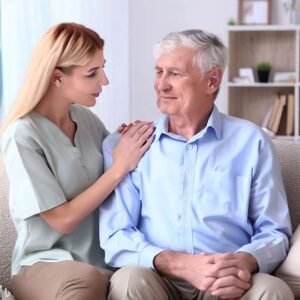
Hemorrhagic stroke can significantly impact the quality of life of the stroke survivor and their caregivers. Caregivers play a vital role in supporting stroke survivor’s recovery and helping them adapt to life after a stroke. However, caregiving can also be challenging, both physically and emotionally. Therefore, it is essential to provide caregivers with adequate support to ensure they can continue providing the best care possible.
Roles and Challenges
Caregivers of stroke survivors often take on multiple roles, such as providing physical, emotional, and financial support. They may also need to coordinate medical appointments, manage medications, and assist with daily activities. Caregiving can be physically demanding, and caregivers may experience fatigue, sleep disturbances, and other health issues.
In addition to caregiving’s physical demands, caregivers may experience emotional challenges. They may feel overwhelmed, anxious, or depressed and may struggle to balance their own needs with the needs of the stroke survivor. Caregivers may also face social isolation and financial stress.
Self-Care for Caregivers
Taking care of oneself is essential for caregivers to maintain their physical and emotional well-being. Caregivers should prioritize their health by getting enough sleep, eating a healthy diet, and engaging in regular physical activity. They should also make time for activities they enjoy and seek support from friends and family.
Caregivers should also seek help when they need it. This may include asking family members or friends for assistance with caregiving tasks, hiring a professional caregiver, or joining a support group.
Support Groups and Resources
Joining a support group can be an excellent way for caregivers to connect with others who are going through similar experiences. Support groups can provide emotional support, practical advice, and information about resources and services available in the community. Caregivers can also benefit from individual counseling or therapy to address their emotional needs.
There are also several resources available to help caregivers of stroke survivors. The American Stroke Association provides a caregiver guide to stroke, including information on caregiving strategies, legal and financial resources, and tips for managing stress. WebMD offers a caregiver checklist for stroke caregivers that can make daily care easier. The Stroke Connection E-News is a monthly newsletter that provides information and support to stroke survivors and their caregivers.
In conclusion, caregivers play an essential role in stroke survivors’ recovery and quality of life. However, caregiving can also be challenging, both physically and emotionally. Therefore, providing caregivers with adequate support, including self-care strategies, support groups, and access to resources and services is essential.
Continued Medical Monitoring and Secondary Prevention
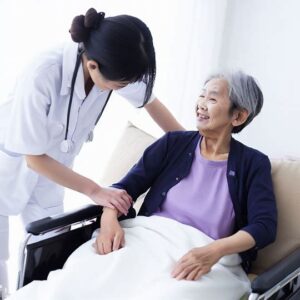
Individuals who have experienced a hemorrhagic stroke require ongoing medical monitoring and secondary prevention measures to manage their recurrent stroke risk and improve their quality of life. This section will discuss the importance of stroke prevention education, regular follow-ups and physician care, and lifestyle modifications.
Stroke Prevention Education
Stroke prevention education is an essential component of secondary prevention. Patients should be educated on the risk factors for stroke, such as high blood pressure, smoking, and diabetes, and how to manage these risk factors. Patients should also be educated on the importance of taking medications as prescribed, such as antihypertensive medications and anticoagulants, to prevent recurrent strokes.
According to a randomized controlled trial published in the American Heart Association (AHA) journal, Stroke, stroke education significantly improved patients’ knowledge of stroke and their adherence to secondary prevention measures. The trial found that patients who received stroke education were more likely to take their medications as prescribed and had better blood pressure control than those who did not.
Regular Follow-ups and Physician Care
Regular follow-ups with a physician are critical to ensure that patients adhere to their secondary prevention measures and manage any complications that may arise. Patients should have regular blood pressure checks, and their medications should be adjusted as necessary to maintain optimal blood pressure control.
In addition, patients should be screened for depression, anxiety, and cognitive impairment, which are common after stroke and can significantly impact a patient’s quality of life. According to clinical practice guidelines published in Stroke, depression is present in up to one-third of stroke survivors and is associated with poorer functional outcomes and increased mortality.
Lifestyle Modifications
Lifestyle modifications, such as regular exercise, a healthy diet, and smoking cessation, are essential components of secondary prevention. Patients should be encouraged to engage in regular physical activity, such as walking or swimming, to improve their cardiovascular health and reduce their risk of recurrent stroke.
A healthy diet, rich in fruits, vegetables, whole grains, and lean proteins, can help manage risk factors such as high blood pressure and diabetes. Patients should also be encouraged to quit smoking, as smoking is a significant risk factor for stroke and can impair the healing process after a stroke.
According to a study published in Stroke, lifestyle modifications significantly improve quality of life after a stroke. The study found that patients who engaged in regular physical activity and followed a healthy diet had better physical and mental health outcomes than those who did not.
In conclusion, continued medical monitoring and secondary prevention measures are essential for individuals who have experienced a hemorrhagic stroke. Stroke prevention education, regular follow-ups and physician care, and lifestyle modifications are critical components of secondary prevention and can significantly improve a patient’s quality of life.
Quality of Life After Hemorrhagic Stroke – Summary
Hemorrhagic stroke is a potentially life-threatening condition when a blood vessel ruptures and bleeds into the brain. It is the deadliest and most disabling form of stroke.
Patients who have experienced a hemorrhagic stroke may experience a significant decrease in their quality of life due to neurological impairment, physical disability, and other complications.
Several factors can impact quality of life after hemorrhagic stroke. These include age, comorbidities, hemorrhage type, financial status, anxiety, neurological function, and activities of daily living.
According to a study published in the Journal of Stroke and Cerebrovascular Diseases, anxiety, neurological function, activities of daily living, and other personal and social factors can predict health-related quality of life in patients with hemorrhagic stroke.
Another study published in the journal Stroke found that patients who had experienced intracerebral hemorrhage had a poorer quality of life than those who had experienced other forms of stroke.
In addition, sociodemographic factors such as education level, income, and social support can also impact quality of life after hemorrhagic stroke.
Overall, healthcare providers must consider the factors that can impact quality of life in patients who have experienced hemorrhagic stroke. By addressing these factors and providing appropriate care and support, healthcare providers can help improve the quality of life for these patients.
Frequently Asked Questions
What is the average life expectancy for hemorrhagic stroke survivors?
The average life expectancy for hemorrhagic stroke survivors varies depending on the severity of the stroke and the individual’s overall health. According to a study published by Practical Neurology, for a man aged 70 with disabilities consistent with Rankin grade 4, the stated life expectancy is 6 additional years. However, it is important to note that each case is unique and life expectancy can vary.
What are the common challenges faced by hemorrhagic stroke survivors?
Hemorrhagic stroke survivors may face various challenges, including difficulty with speech and communication, weakness or paralysis on one side of the body, difficulty with mobility and walking, and cognitive impairment. Depression and anxiety are also common challenges for stroke survivors.
What is the recovery timeline for hemorrhagic stroke survivors?
The recovery timeline for hemorrhagic stroke survivors can vary depending on the severity of the stroke and the individual’s overall health. Recovery can take weeks, months, or even years. Rehabilitation, including physical, occupational, and speech therapy, can help speed up recovery.
How does a hemorrhagic stroke affect mobility and walking?
A hemorrhagic stroke can affect mobility and walking by causing weakness or paralysis on one side of the body. Rehabilitation, including physical therapy, can help improve mobility and walking by strengthening muscles and improving coordination.
What are the long-term effects of a hemorrhagic stroke?
Long-term effects of a hemorrhagic stroke can include cognitive impairment, difficulty with speech and communication, weakness or paralysis on one side of the body, and difficulty with mobility and walking. Depression and anxiety are also common long-term effects for stroke survivors.
What are the risk factors and causes of hemorrhagic stroke?
The risk factors for hemorrhagic stroke include high blood pressure, smoking, heavy drinking, and a family history of stroke. Causes of hemorrhagic stroke include high blood pressure, aneurysms, arteriovenous malformations, and bleeding disorders. It is important to manage risk factors to reduce the risk of stroke.
Sources:
